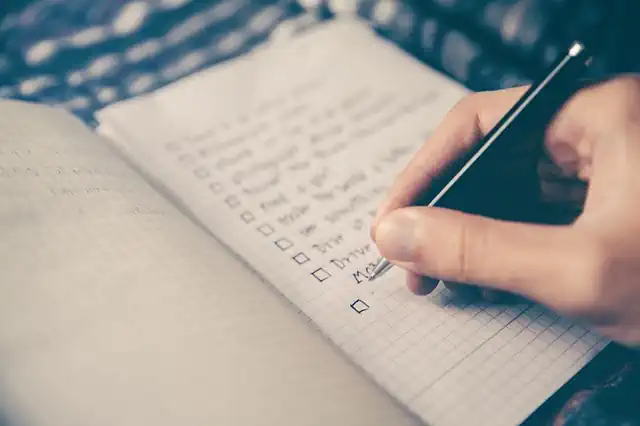One Dollar A Day
Introduction

One Dollar A Day is a poverty alleviation program that aims to provide financial assistance to individuals living in extreme poverty. The program operates on the principle that even a small amount of money can make a significant difference in the lives of those who are struggling to meet their basic needs. By providing a daily stipend of one dollar, the program seeks to empower individuals to take control of their lives and work towards a better future.
How to Live on One Dollar A Day
Living on one dollar a day may seem impossible to many of us, but for millions of people around the world, it is a harsh reality. Poverty is a global issue that affects people from all walks of life, and it is important to understand the challenges that come with living on such a limited budget.
The first step to living on one dollar a day is to understand the value of money. Every penny counts, and it is important to make every dollar stretch as far as possible. This means being mindful of every purchase, no matter how small. It also means being creative with resources and finding ways to make the most of what you have.
One of the most important things to consider when living on one dollar a day is food. Food is a basic necessity, and it is important to find ways to eat healthy and nutritious meals without breaking the bank. This may mean buying in bulk, shopping at discount stores, or growing your own food. It may also mean being willing to try new foods and recipes that are both affordable and nutritious.
Another important aspect of living on one dollar a day is housing. Finding affordable housing can be a challenge, but it is possible. This may mean living in a smaller space, sharing a living space with others, or finding alternative housing options such as camping or living in a van. It is important to be creative and resourceful when it comes to finding affordable housing.
Transportation is another area where it is important to be mindful of expenses. Walking or biking may be the most affordable options, but public transportation can also be a cost-effective way to get around. It is important to plan ahead and budget for transportation expenses, and to be willing to make sacrifices in order to save money.
Living on one dollar a day also means being mindful of other expenses such as clothing, healthcare, and entertainment. It may mean shopping at thrift stores for clothing, finding low-cost healthcare options, and finding free or low-cost entertainment options such as parks and community events.
Living on one dollar a day is not easy, and it requires a great deal of sacrifice and resourcefulness. However, it is important to remember that many people around the world live on even less than one dollar a day, and it is possible to survive and even thrive on a limited budget.
In conclusion, living on one dollar a day is a challenge, but it is possible. It requires a great deal of creativity, resourcefulness, and sacrifice, but it is important to remember that many people around the world live on even less than one dollar a day. By being mindful of expenses, finding affordable housing and transportation options, and being willing to make sacrifices, it is possible to live a fulfilling life on a limited budget.
The Impact of One Dollar A Day on Poverty Reduction
Poverty is a global issue that affects millions of people around the world. It is a complex problem that requires a multifaceted approach to address. One of the most effective ways to reduce poverty is through microfinance, which provides small loans to individuals who are unable to access traditional banking services. One such microfinance program is the One Dollar A Day initiative, which has had a significant impact on poverty reduction.
The One Dollar A Day initiative was launched in 1990 by Muhammad Yunus, a Bangladeshi economist and founder of the Grameen Bank. The program provides small loans of one dollar per day to individuals living in poverty, with the aim of helping them start their own businesses and become self-sufficient. The loans are typically used to purchase equipment, raw materials, or inventory, and are repaid over a period of several months.
The impact of the One Dollar A Day initiative has been significant. Since its inception, the program has helped millions of people around the world lift themselves out of poverty. By providing access to credit, the program has enabled individuals to start their own businesses, generate income, and improve their standard of living. This has had a ripple effect on their families and communities, creating a positive cycle of economic growth and development.
One of the key benefits of the One Dollar A Day initiative is that it empowers individuals to take control of their own lives. By providing access to credit, the program enables individuals to pursue their own entrepreneurial ventures, rather than relying on handouts or aid. This not only helps to reduce poverty, but also promotes self-sufficiency and independence.
Another benefit of the One Dollar A Day initiative is that it promotes financial inclusion. Many individuals living in poverty are unable to access traditional banking services, which can make it difficult for them to save money, invest in their businesses, or access credit. By providing small loans, the program helps to bridge this gap and provide individuals with the financial tools they need to succeed.
Of course, the One Dollar A Day initiative is not without its challenges. One of the biggest challenges is ensuring that the loans are used effectively and that individuals are able to repay them. This requires careful monitoring and support from the program administrators, as well as a commitment from the borrowers to use the loans responsibly.
Despite these challenges, the One Dollar A Day initiative has proven to be a powerful tool for poverty reduction. By providing access to credit and promoting self-sufficiency, the program has helped millions of individuals around the world improve their lives and build a better future for themselves and their families. It is a testament to the power of microfinance and the importance of empowering individuals to take control of their own lives.
In conclusion, poverty is a complex problem that requires a multifaceted approach to address. The One Dollar A Day initiative is one such approach, providing small loans to individuals living in poverty with the aim of helping them start their own businesses and become self-sufficient. The impact of the program has been significant, helping millions of people around the world lift themselves out of poverty and promoting self-sufficiency and financial inclusion. While there are challenges to the program, it is a powerful tool for poverty reduction and a testament to the power of microfinance.
One Dollar A Day Challenge: My Experience
As someone who has always been interested in personal finance and budgeting, I was intrigued when I first heard about the One Dollar A Day Challenge. The premise is simple: for one month, you commit to spending only one dollar a day on non-essential items. This means no coffee runs, no impulse purchases, and no eating out. The goal is to save money, of course, but also to become more mindful of your spending habits and to appreciate the things you already have.
I decided to take on the challenge for myself, and I have to admit, it was harder than I thought it would be. The first few days were easy enough – I had stocked up on groceries beforehand and was able to make meals at home without spending any extra money. But as the days went on, I found myself craving things that I normally wouldn’t think twice about buying. A candy bar at the gas station, a new book at the bookstore, a latte from my favorite coffee shop – all of these things suddenly seemed like luxuries that I couldn’t afford.
It was a humbling experience, to say the least. I realized how much of my daily routine was centered around spending money, and how much I took for granted. I also found myself becoming more creative in finding ways to save money. I started meal planning more diligently, using up ingredients that I already had in my pantry instead of buying new ones. I walked or biked instead of driving, saving money on gas and getting some exercise in the process. And I started to appreciate the little things more – a homemade cup of tea, a walk in the park, a good book from the library.
Of course, there were some challenges along the way. One day, I forgot to pack my lunch and had to scrounge up something from the office kitchen. Another day, I had a social event that I had already committed to attending, and ended up spending more than a dollar on food and drinks. But overall, I stuck to the challenge as best I could, and I’m proud of myself for doing so.
At the end of the month, I tallied up my savings and was pleasantly surprised. I had saved over $100 by cutting out non-essential spending, which was a significant amount for me. But more than that, I had gained a new perspective on my relationship with money. I realized that I didn’t need to spend money to be happy, and that there were plenty of things in my life that brought me joy that didn’t cost a dime.
Overall, I would highly recommend the One Dollar A Day Challenge to anyone who is looking to save money or become more mindful of their spending habits. It’s not easy, but it’s a worthwhile exercise in discipline and gratitude. And who knows – you might just discover some new ways to enjoy life without breaking the bank.
One Dollar A Day Meal Plan: Eating Healthy on a Tight Budget
As the cost of living continues to rise, many people are finding it increasingly difficult to make ends meet. One area where this is particularly evident is in the cost of food. Eating healthy can be expensive, and for those on a tight budget, it can seem impossible. However, with a little creativity and planning, it is possible to eat healthy on just one dollar a day.
The first step in creating a one dollar a day meal plan is to focus on buying foods that are both nutritious and affordable. This means looking for foods that are high in protein, fiber, and other essential nutrients, but that are also inexpensive. Some examples of these types of foods include beans, lentils, rice, and vegetables like carrots, cabbage, and spinach.
Once you have identified the foods that you want to include in your meal plan, it is important to plan your meals in advance. This means taking the time to sit down and create a menu for the week, based on the foods that you have available. This will help you to avoid impulse purchases and ensure that you are making the most of your budget.
When planning your meals, it is also important to think about portion sizes. Eating smaller portions can help you to stretch your budget further, while also helping you to maintain a healthy weight. To make sure that you are getting enough nutrients, try to include a variety of different foods in each meal, and aim to eat at least five servings of fruits and vegetables each day.
Another important aspect of eating healthy on a tight budget is to avoid processed foods and snacks. These types of foods are often high in calories, sugar, and fat, and can be expensive. Instead, focus on whole foods like fruits, vegetables, and whole grains, which are not only healthier but also more affordable.
One way to save money on your grocery bill is to buy in bulk. This can be especially helpful for items like rice, beans, and lentils, which are often sold in large bags at a lower cost per pound. You can also save money by buying seasonal produce, which is often less expensive than out-of-season fruits and vegetables.
Finally, it is important to be creative with your meals. There are many ways to prepare healthy, delicious meals on a tight budget, and with a little experimentation, you can find the recipes that work best for you. For example, you can make a hearty soup using beans and vegetables, or a stir-fry with rice and seasonal vegetables. You can also try making your own bread, which is not only healthier but also more affordable than store-bought bread.
In conclusion, eating healthy on a tight budget is possible with a little planning and creativity. By focusing on nutritious, affordable foods, planning your meals in advance, and avoiding processed foods and snacks, you can create a one dollar a day meal plan that is both healthy and satisfying. With a little effort, you can enjoy delicious, nutritious meals without breaking the bank.
One Dollar A Day Savings Challenge: Tips and Tricks
Saving money can be a daunting task, especially when you’re living paycheck to paycheck. However, with the One Dollar A Day Savings Challenge, you can start saving money without feeling overwhelmed. The concept is simple: save one dollar every day for a year, and you’ll have $365 by the end of the year. It may not seem like a lot, but it’s a great way to start building your savings.
To make the One Dollar A Day Savings Challenge work, you need to be disciplined and committed. It’s easy to forget to save a dollar every day, but with a little bit of planning and effort, you can make it a habit. Here are some tips and tricks to help you succeed in the challenge:
1. Set a goal
Before you start the challenge, set a goal for what you want to achieve with your savings. Do you want to save for a vacation, a down payment on a house, or an emergency fund? Having a specific goal in mind will help you stay motivated and focused.
2. Make it a habit
Saving one dollar every day may seem like a small amount, but it can add up quickly. To make it a habit, set a reminder on your phone or put a note on your fridge to remind you to save your dollar every day. You can also make it a part of your daily routine, like brushing your teeth or making your bed.
3. Use cash
Using cash instead of a credit or debit card can help you stay on track with your savings. When you have physical money in your hand, it’s easier to see how much you’re saving and how much you have left to save. Plus, it’s harder to spend cash than it is to swipe a card.
4. Get creative
Saving one dollar every day doesn’t have to be boring. Get creative with how you save your dollar. You can put it in a jar, a piggy bank, or even a savings app on your phone. You can also challenge yourself to find ways to save more than one dollar a day, like bringing your lunch to work instead of eating out.
5. Celebrate your progress
Saving money can be a long and difficult journey, so it’s important to celebrate your progress along the way. When you reach a milestone, like saving $50 or $100, treat yourself to something small, like a coffee or a movie. Celebrating your progress will help you stay motivated and committed to your savings goal.
The One Dollar A Day Savings Challenge may seem like a small step, but it’s a great way to start building your savings. With a little bit of discipline and commitment, you can make it a habit and start saving money without feeling overwhelmed. Remember to set a goal, make it a habit, use cash, get creative, and celebrate your progress. Good luck on your savings journey!
Conclusion
Conclusion: One Dollar A Day is a poverty reduction program that aims to provide financial assistance to individuals living in extreme poverty. While the program has received criticism for its limited impact and sustainability, it has also been praised for its simplicity and potential to empower individuals to improve their own lives. Ultimately, the effectiveness of One Dollar A Day will depend on a variety of factors, including the specific context in which it is implemented and the level of support it receives from governments, NGOs, and other stakeholders.







